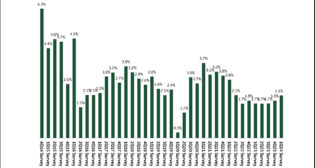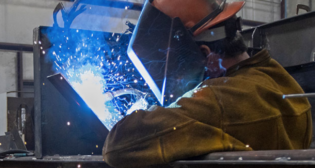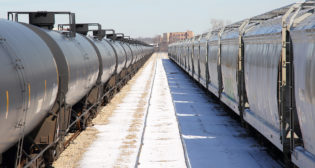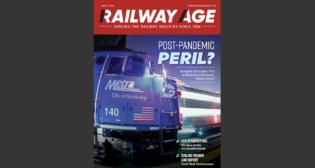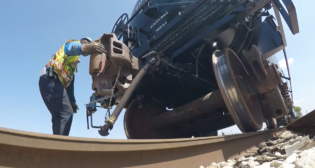
FRA Issues Report on Improving Tank Car Crash Energy Management
Written by Marybeth Luczak, Executive Editor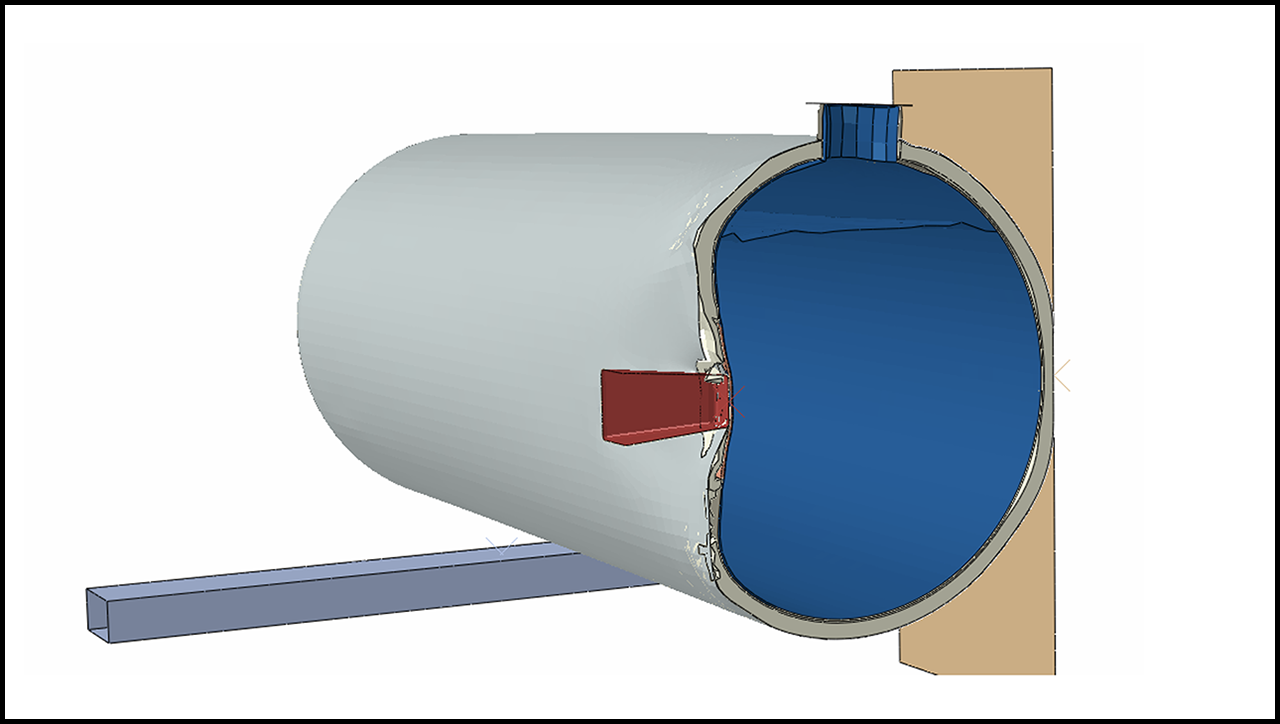
(Image Courtesy of FRA)
The Federal Railroad Administration (FRA) has released a technical report aimed to help improve the puncture resistance of hazardous materials (hazmat) tank cars in the event of an accident or derailment.
The report, Improving Tank Car Crash Energy Management (CEM) (download below), is the result of a two-year research effort led by Thornton Tomasetti to investigate multiple mitigation concepts for hazmat tank cars, such as changing shell thickness, splitting one thick plate into multiple plates, and making changes to the internal liner.
“Considering the available tank car space and weight constraints, one of the simplest theoretical ways to address puncture resistance would be to increase the thickness of the tank shell,” according to the report. This applies to the design of new tank cars only; the report noted that the tank car industry “has made generational improvements in which head and shell thickness have been increased.” The researchers investigated this option by increasing the tank shell thickness to 1.5 inches and calculating the tank car response to side impact. A survival speed of approximately 22-23 mph (an approximate threefold increase in energy) was achieved using around 90% of the available weight. Recognizing the challenges related to manufacturing a tank car with 1.5-inch-thick shell, the report said that researchers conducted a parametric study to investigate the effect of increased ductility and strength. In both cases, the puncture energy approximately doubled, with survival speeds increasing to 19 mph and 20 mph for the high ductility and high strength materials, respectively—consistent with findings of previous researchers, according to the report.
The research team also considered implementing a multi-layer (i.e., tank-within-a-tank) approach. “The results indicated that in various configurations the survival speed could approximately match that of the 1.5-inch-thick shell provided that the total steel thickness was consistent,” the report said. “Researchers found that splitting the outer plates into a series of rings did not significantly change the puncture resistance. One significant benefit the multi-layer solution offers is the use of increased strength or ductility steels for the outer layers. Additionally, a numerical investigation of the effect of plate thickness on ductility showed that increasing the thickness can significantly reduce ductility in bending. Applying a multi-layer solution avoids this ductility penalty.”
Additionally, the researchers investigated the use of an internal tank car liner, which the report said, “appeared potentially effective purely as a containment mechanism in the event of puncture (i.e., no improvement in puncture speed was observed).”
Finally, researchers considered mitigation solutions aimed at “blunting the indenter, finding the effectiveness of this approach similar to increasing the shell thickness, but with significant added complexity and cost,” according to the report, which noted that the team did not recommend pursuing mitigation solutions aimed primarily at blunting.
The most promising mitigation approach to improve tank car puncture resistance, the report found, is “likely to be the multi-layer (i.e., tank-within-a-tank) approach, in which different steel grades can be used for the outer layers with the specific purpose of enhancing the overall puncture resistance of the tank car.” According to the report, these findings match one of the key findings of the Advanced Tank Car Collaborative Research Program (ATCCRP), “although it is not yet clear what level of puncture resistance may be achieved using this approach.” The researchers recommend further study to investigate the level of puncture resistance possible using the multi-layer approach.
